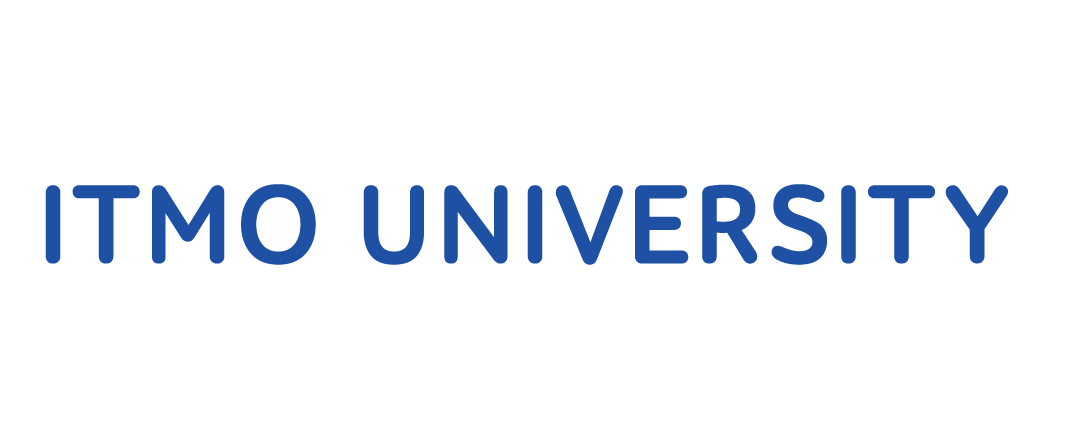Menu
Publications
2025
2024
2023
2022
2021
2020
2019
2018
2017
2016
2015
2014
2013
2012
2011
2010
2009
2008
2007
2006
2005
2004
2003
2002
2001
Editor-in-Chief

Nikiforov
Vladimir O.
D.Sc., Prof.
Partners
doi: 10.17586/2226-1494-2018-18-3-416-420
LASER SYNTHESIS OF SELENIUM NANOPARTICLES IN LIQUID MONOMERS
Read the full article
Article in Russian
For citation: Zulina N.A., Fokina M.I., Cherkashina E.G., Nosenko T.N. Laser synthesis of selenium nanoparticles in liquid monomers. Scientific and Technical Journal of Information Technologies, Mechanics and Optics, 2018, vol. 18, no. 3, pp. 416–420 (in Russian). doi: 10.17586/2226-1494-2018-18-3-416-420
Abstract
For citation: Zulina N.A., Fokina M.I., Cherkashina E.G., Nosenko T.N. Laser synthesis of selenium nanoparticles in liquid monomers. Scientific and Technical Journal of Information Technologies, Mechanics and Optics, 2018, vol. 18, no. 3, pp. 416–420 (in Russian). doi: 10.17586/2226-1494-2018-18-3-416-420
Abstract
The paper presents the results of selenium nanoparticles synthesis in various liquid monomers by laser ablation. The following substances were selected as the condensation liquids for laser ablation: isodecyl acrylate (IDA, Isodecylacrylate, Aldrich), carboxyethyl acrylate (2Car, 2-carboxyethyl acrylate, Aldrich), ethylene glycol phenyl acrylate (Aldrich), ethylene glycol phenyl acrylate, an available blend of Ebecryl monomers (Cytec Industries Inc.), currently one of the possible components of modern lacquer coatings for nail plates. Thus, a method is proposed for simultaneous synthesis and incorporation of selenium nanoparticles into a polymer matrix. It is established by scanning microscopy method that the sizes of the obtained nanoparticles are from 50 to 200 nm. Infrared spectroscopy results of obtained colloidal solutions showed zero interactions of selenium nanoparticles with monomers. Stable colloidal solutions of selenium nanoparticles were obtained, and solid polymer films promising for biomedical applications were synthesized. The polymerization of colloidal solutions with added monomers and/or mixtures of oligomers was carried out using photo initiator of polymerization 2.2-dimethoxy-2-fenilatsetofenol, sensitive in the UV region (365 nm). The results of IR spectroscopy of the obtained colloidal solutions and polymer nanocomposites showed the absence of interactions of selenium nanoparticles with monomers and polymer matrices. Such nanocomposites could be perspective for biomedical applications, for example, as fungicidal coatings of different surfaces.
Keywords: laser ablation, selenium nanoparticles, polymer nanocomposites, liquid monomer, colloid
References
References
1. Chaudharya S., Umar A., Mehta S.K. Selenium nanomaterials: an overview of recent developments in synthesis, properties and potential applications. Progress in Materials Science, 2016, vol. 83, pp. 270–329. doi: 10.1016/j.pmatsci.2016.07.001
2. El-Bayoumy K., Sinha R., Pinto J.T., Rivlin R.S. Cancer chemoprevention by garlic and garlic-containing sulfur and selenium compounds. Journal of Nutrition, 2006, vol. 136, no. 3, pp. 864S–869S.
3. Yu B., Zhang Y., Zheng W., Fan C., Chen T. Positive surface charge enhances selective cellular uptake and anticancer efficacy of selenium nanoparticles. Inorganic Chemistry, 2012, vol. 51, pp. 8956–8963. doi: 10.1021/ic301050v
4. Zhang L., Li Y., Shen Y., Xie A. One-step synthesis of poly(2-hexadecyloxyaniline)/selenium nanocomposite Langmuir-Blogett film by in situ redox reaction. Materials Chemistry and Physics, 2011, vol. 125, no. 3, pp. 522–527. doi: 10.1016/j.matchemphys.2010.10.022
5. Yan J., Qiu W., Wang Y., Wang W., Yang Y., Zhang H. Fabrication and stabilization of biocompatible selenium nanoparticles by carboxylic curdlans with various molecular properties. Carbohydrate Polymers, 2018, vol. 179, pp. 19–27. doi: 10.1016/j.carbpol.2017.09.063
6. Tran P.A., Webster T.J. Selenium nanoparticles inhibit Staphylococcus aureus growth. International Journal of Nanomedicine, 2011, vol. 6, pp. 1553–1558.
7. Tugarova A.V., Kamnev A.A. Proteins in microbial synthesis of selenium nanoparticles. Talanta, 2017, vol. 174, pp. 539–547. doi: 10.1016/j.talanta.2017.06.013
8. Tareq F.K., Fayzunnesa M., Kabir M.S., Nuzat M. Mechanism of bio molecule stabilized selenium nanoparticles against oxidation process and Clostridium Botulinum. Microbial Pathogenesis, 2018, vol. 115, pp. 68–73. doi: 10.1016/j.micpath.2017.12.042
9. Zhang J., Teng Z., Yuan Y., Zeng Q., Lou Z., Lee S.H., Wang Q. Development, physicochemical characterization and cytotoxicity of selenium nanoparticles stabilized by
beta-lactoglobulin. International Journal of Biological Macromolecules, 2018, vol. 107, pp. 1406–1413. doi: 10.1016/j.ijbiomac.2017.09.117
beta-lactoglobulin. International Journal of Biological Macromolecules, 2018, vol. 107, pp. 1406–1413. doi: 10.1016/j.ijbiomac.2017.09.117
10. Van Overschelde O., Guisbiers G. Photo-fragmentation of selenium powder by Excimer laser ablation in liquids. Optics and Laser Technology, 2015, vol. 73, pp. 156–161. doi: 10.1016/j.optlastec.2015.04.020
11. Tugarova A.V., Mamchenkova P.V., Dyatlova Yu.A., Kamnev A.A. FTIR and Raman spectroscopic studies of selenium nanoparticles synthesised by the bacterium Azospirillum thiophilum. Spectrochimica Acta Part A: Molecular and Biomolecular Spectroscopy, 2018, vol. 192, pp. 458–463. doi: 10.1016/j.saa.2017.11.050
12. Peng X., Wang L., Zhang X., Gao B., Chu P.K. Reduced graphene oxide encapsulated selenium nanoparticles for high-power lithium-selenium battery cathode. Journal of Power Sources, 2015, vol. 288, pp. 214–220. doi: 10.1016/j.jpowsour.2015.04.124
13. Singh S.C., Mishra S.K., Srivastava R.K., Gopal R. Optical properties of selenium quantum dots produced with laser irradiation of water suspended Se nanoparticles. Journal of Physical Chemistry C, 2010, vol. 114, vol. 41, pp. 17374–17384. doi: 10.1021/jp105037w
Denisyuk I.Y., Vasilyeva N., Fokina M.I., Burunkova J.E., Uspenskaya M., Zulina N.A., Bogomolova T.S., Vybornova I.A., Orishak E.A. Bacteria- and fungicidal action of Ag, Au, ZnO, SiO2 nanoparticles in presence of carboxylic acid in polymer matrix. Journal of Bionanosciencе, 2017, vol. 11, no. 5, pp. 370–375. doi: 10.1166/jbns.2017.1464













